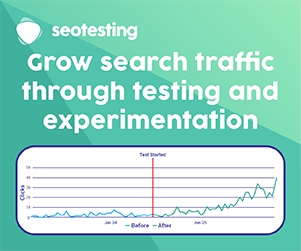Host Erin Sparks and Studio Creative Director Jacob Mann along with Mordy Oberstein, Wix’s SEO Liaison, pick apart three important headlines about Google along with Jacob’s once-upon-a-time appearance on The Price is Right, Erin’s close encounter with Steve Forbes, and Mordy’s water situation (or lack thereof and no, he’s not in Texas). All this and more on this week’s news roundup, episode 398 of the award-winning EDGE of the Web podcast!
[00:06:59]
Google Showing Fewer Featured Snippets Since February 19th
From Barry Schwartz on Search Engine Land we see Google Showing Fewer Featured Snippets Since February 19th. Google seems to be showing fewer featured snippets in the search results since February 19, 2021. All three tools that Barry is aware that track featured snippets all showed a significant decline in the percentage of search results with featured snippets.
- Mordy Oberstein: A featured snippet usually appears at the top of the Google search engine results page. It could a video, a picture, a list, or bit of text along with a link to the website from which the featured snippet content was drawn. The reason it’s called a featured snippet is that it usually provides the answer you’re looking for right there in the big box, or at least part of the answer, and if not then you can click through to the website with the content you seek.
- Erin Sparks: According to one check using MOZ, something like 7.5% of search engine results would have featured snippets, and that’s now more like 4.5%, which represents a dramatic drop of 40%, which is huge! Those featured snippets are a representation of the knowledge graph and Google’s understanding of topics.
- Mordy Oberstein: Yes, a lot of people are talking about this and wondering why the percentage of results with featured snippets is suddenly the lowest it’s ever been on both desktop and mobile. Using RankRanger to check on this shows that same decline. But the data also differs between RankRanger, SEMRush, and MOZ. RankRanger and SEMRush are only showing about a 20% decline, and that’s because of how different their datasets are. MOZ tracks 10,000 keywords with higher search volume, whereas RankRanger and SEMRush include a much wider range of keywords, including some longtail keywords, which gives a more normalized picture. But what the difference in documented drop says to me is that what took the hit were high-authority, high-volume, highly competitive keywords. The heaviest losses were in niches like finance and health. Maybe Google looked at what was surfacing for those high-volume/authority keywords and didn’t like what it was seeing and decided some kind of reset was needed, or some kind of updating is occurring to featured snippets. Google does do featured snippets resets from time to time to swap out the URLs that are included in featured snippets.
- Erin Sparks: It will be interesting to see what the new URLs included in featured snippets indicate around Google’s understanding within different verticals.
- Mordy Oberstein: I’ll be interested in seeing if featured snippets bounce back at all in health and finance. Health is tricky to come up with featured snippets to begin with. It’s also worth remembering that this is all very complicated and sometimes the tools we use to document things don’t pick up on some changes. But this is a big one.
- Erin Sparks: And it’s coveted SERP real estate too.
[00:16:57]
Advertisers have until February 2022 to adjust to Google’s new Partner Program requirements
Also on on Search Engine Land but his time from Carolyn Lyden, we learn that Advertisers have until February 2022 to adjust to Google’s new Partner Program requirements. In an email to Google Partner Program members around the world, Google announced changes to the Program structure and badge criteria. The changes were initially slated to take place in June 2020, but due to the pandemic will now go into effect beginning in February 2022. This means Partners will have a year to meet the new Program requirements.
- Erin Sparks: Some of those changes to the program include being able to dismiss or apply recommendations to get a 70% optimization score, meet the minimum spending threshold of $10,000 across all managed account over a 90-day period, and 50% of account strategists must be certified in Google Ads. Some of these requirements had some SEOs up in arms because they’re trying to be client-focused, not spend-focused as Google is forcing them to be. There’s a big fat conflict of interest lurking in there.
- Mordy Oberstein: Since there is this astonishing “spend threshold” I’m glad they’ve put off the new requirements for a while longer so companies have a chance to normalize as we get through the pandemic.
- Erin Sparks: It just doesn’t seem right for Google to force high spending in this way.
[00:21:49]
Google on Expected Impact of Core Web Vitals Update
From Roger Montti on Search Engine Land: Google on Expected Impact of Core Web Vitals Update. Google announced a new feature in Search Console named “associations.” Google explains what to expect when Core Web Vitals become a ranking signal. Google’s Danny Sullivan recently discussed the expected ranking impact of the May 2021 Page Experience Update that will integrate Core Web vitals as a ranking factor.
- Erin Sparks: What are Core Web Vitals and why should we care?
- Mordy Oberstein: They are three different metrics that align to aspects of the user experience when they visit a website. They include LCP (largest contentful paint) meaning how long it takes for the biggest page asset to load, CLS (cumulative shift layout) meaning does content keep jumping around as it loads and make it hard to click on what the user wants to click on, and FID (first input delay) meaning how fast does the site to respond to user input when interacting with the site. It’s Google wanting to give better user experiences on mobile.
- Erin Sparks: And they’re going to impact ranking. Sites that give bad user experiences won’t rank as well.
- Mordy Oberstein: I wonder about how site traffic plays into this. If you don’t have a lot of site traffic then you don’t have FID. So, if a site that doesn’t have a lot of traffic, will that negatively impact them?
- Erin Sparks: Applying this uniformly across the web seems especially challenging. Or what if a website publisher simply doesn’t have any web development capacity to do anything about it.
- Mordy Oberstein: Google wants to tout sites that pass the Core Web Vitals test, but what about small business sites that are at a disadvantage on this whether because of a lack of traffic or WebDev capacity. Why should they be punished if they can’t pass the test through no fault of their own? It’s a WebDev issue and yet is going to impact SEO rankings. And if you use a CMS for your site, you have to know if they’re taking care of that for you or if the CMS is keeping you from passing the Core Web Vitals test. You can do quick and easy test of your site at PageSpeed Insights.
- Erin Sparks: A more extensive analysis can be done using the Lighthouse plugin. Google has been focused on site speed for quite some time, and this is just the next stage of that quest.
This week on SEO chat, oddly enough and by coincidence, the focus will be Core Web Vitals with Emma Russel of Contemplate Digital. Join in the fun on Twitter by tuning in to #SEOchat on Thursday at 1:00 pm eastern time.






















